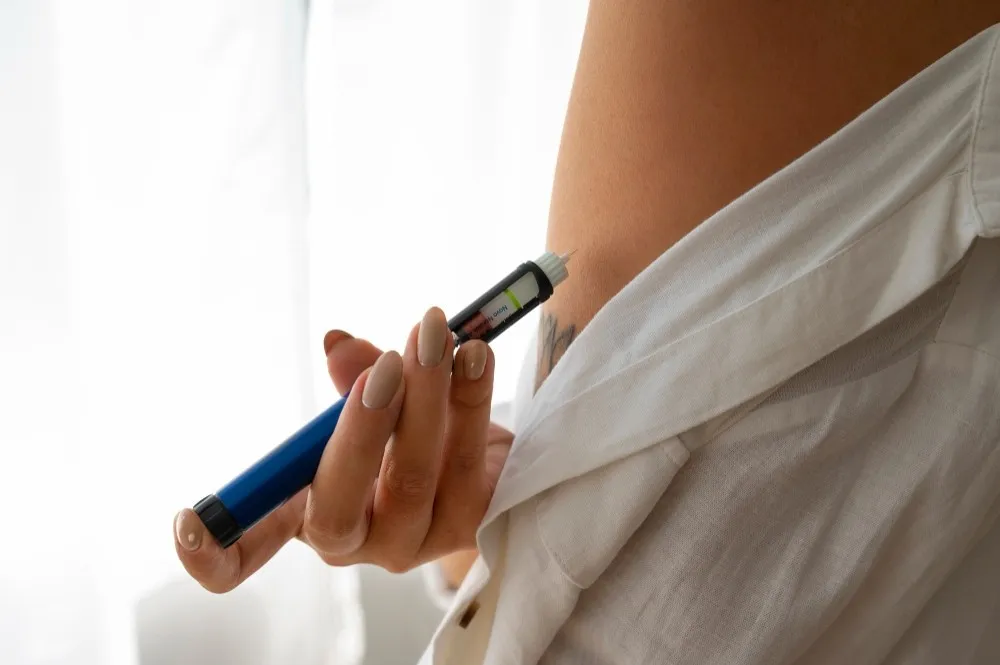Amlodipine is a common drug used to treat high blood pressure, angina, and issues linked to coronary artery disease. It often comes up as one of the first medicines doctors choose to treat these conditions. Most people who take it do well. But not all. Like most blood pressure pills, it has its downsides.
Amlodipine is part of a group of drugs called calcium channel blockers. This class of drugs works by slowing the movement of calcium through heart muscles and blood vessels. When this happens, the vessels relax and widen. That helps blood flow better and drops the pressure inside your system. For someone with chest pain, this also means the heart doesn’t have to work as hard.
This drug may seem mild, but it can affect your daily life. Some of the known side effects are swelling, drowsiness, and dizzy spells. If you're on Amlodipine or plan to start, it’s wise to know what to look out for.
10 Side Effects of Amlodipine To Be Aware Of
It is necessary to note that you must not, at any cost, consume this medicine if you are allergic to it. Common side effects include:
1. Swelling in Legs or Ankles
Edema or swelling in your legs or ankles is one of the most common side effects. It happens because Amlodipine dilates your blood vessels to improve blood flow and reduce blood pressure. However, this can cause an accumulation of pressure on the smaller vessels, causing fluid to leak out into surrounding tissues. This happens in both legs, usually. Your healthcare professional might recommend elevating your legs periodically throughout the day or wearing compression socks.
2. Fatigue
Feeling tired or fatigued might present as a side effect of Amlodipine. It is common for blood pressure medications such as Amlodipine to make you feel tired or even exhausted. This side effect often improves as your body adjusts to the new medication or dosage. There are, however, a few things that you can do to boost your energy. These include regular exercise and making healthy food choices.
3. Dizziness
Dizziness is a side effect that is more likely to happen with higher doses. You may feel dizzy when you change positions. For example, when you go from lying down to sitting or standing up. You must be careful around sudden movements as such. However, it is also important to notify your healthcare professional if the dizziness becomes bothersome.
4. Weight Gain
Typically, Amlodipine is not known to cause any weight gain by itself. However, if your body is retaining more fluid, changes in weight may be observed. This side effect is often accompanied by swelling in the legs and ankles. It is important to note that sudden weight gain is concerning if you have heart failure. This usually indicates that your heart is not pumping well enough, resulting in a fluid buildup in your body.
5. Fast or Irregular Heartbeat
Fast or irregular heartbeats (heart palpitations) can be a side effect. When it happens, your chest may feel pounding or fluttering. It's one of the side effects that is more likely to happen with higher doses. You must let your healthcare provider know if your palpitations are lasting longer or starting to happen more often. Immediate medical attention should be sought if other symptoms, like shortness of breath, chest pain, or loss of consciousness, accompany them.
6. Nausea
Several medications are known to cause nausea, and Amlodipine is no exception. However, in the case of Amlodipine, the nausea is mild and rarely results in vomiting. You can take Amlodipine with or without food. If the nausea hits you after you take a dose, try it with food next time.
7. Flushing
Flushing isn't the most common side effect. But it can cause your skin to look red or feel warm to the touch. Some people experience it as a result of blood vessels widening. Flushing is more likely to happen with higher doses of Amlodipine. Women were also three times more likely to report flushing than men during clinical trials. As with several other side amlodipine effects, flushing should improve over time.
8. Increased Urination
Urination problems are possible with calcium channel blockers, including Amlodipine. This is because they can interfere with how your bladder fills, contracts, and empties. You may notice that you must pee more frequently or get up at night to use the bathroom. People with benign prostate hyperplasia (BPH) may be more likely to experience urination problems with Amlodipine. But this can happen to anyone taking the medication. Talk to your provider if this side effect affects your quality of life. They may adjust your dosage or suggest an alternative medication.
9. Erectile Dysfunction
Although not so common, people have reported erectile dysfunction as a side-effect of taking Amlodipine. It is, however, important to note that ED can have several causes, including high blood pressure. Furthermore, ED is a more likely side effect than other medications for blood pressure, such as beta-blockers and thiazide diuretics. If you are experiencing this, it is best to let your doctor know. They can best determine the underlying cause and change the course of treatment if required.
10. Abdominal Pain
Although it's not particularly common, Amlodipine can cause abdominal pain. But this could be a sign of pancreatitis if accompanied by other symptoms, like nausea and vomiting, fever, and jaundice (yellowing skin and eyes). Acute pancreatitis can be life-threatening. Get immediate medical attention if these symptoms develop.
Warnings and Cautions Associated with Amlodipine
- Inform your doctor about any underlying cardiac or liver diseases, including congestive heart failure, before starting Amlodipine.
- Mention if you regularly consume alcohol, as it can lower blood pressure and amplify Amlodipine's side effects.
- Continue taking Amlodipine as prescribed for high blood pressure, even if you feel well since hypertension often shows no visible symptoms.
- Be prepared to take the medication regularly, possibly for life, as part of a comprehensive treatment plan.
- Follow the full treatment program, including exercises, diet, weight control, and any additional medications, with discipline.
- Inform your doctor about any other medications you take for blood pressure management.
- Mild worsening of chest pain may occur when starting or increasing the dose of Amlodipine; consult your doctor if the pain is severe or concerning.
Can You Stop Amlodipine Suddenly?
No, you should not stop Amlodipine all at once. If you stop the drug without a plan, your blood pressure can spike. This may lead to chest pain or even a heart attack.
If you're facing side effects, tell your doctor. They may lower the dose first or shift you to another pill. Never stop on your own.
How Long Do Amlodipine Side Effects Last?
Some side effects last only a few days. Your body may need time to adjust. You may feel light-headed or weak for the first week. Swelling and flushing may take longer to go.
If the problems don’t go away in a few weeks, they may not go away at all. In that case, you might need a dose change or a new drug. Your doctor will guide you.
Is Amlodipine Safe for Long-Term Use?
Yes, Amlodipine is often used for years. Many people take it for life. It helps manage blood pressure and lowers the risk of stroke or heart issues.
Long-term use is safe for most. But you must check with your doctor from time to time. This helps track side effects and keeps your treatment on course.
Does Amlodipine Cause Hair Loss?
Hair loss is not a known side effect of Amlodipine. If you are losing hair, it could be due to stress, other drugs, or health issues like thyroid imbalance.
Talk to your doctor. They might do tests or look at other medicines you take. Hair loss from blood pressure pills is more common with other types, not calcium blockers like Amlodipine.
Is Amlodipine Safe for the Elderly?
Yes, but with care. Older people may feel side effects more. Swelling, low pressure, and dizzy spells may be stronger. The dose must be right for their age and health.
Most older users do well with a lower dose. They should stay hydrated and avoid sudden moves that can cause falls.
Conclusion
Amlodipine is a commonly prescribed medication for managing high blood pressure and certain heart conditions. While it can be effective in controlling these conditions, it is important to be aware of the potential side effects. Common side effects of Amlodipine may include dizziness, headache, flushing, and swelling in the ankles or feet. In rare cases, more serious side effects such as chest pain, irregular heartbeat, or allergic reactions may occur. It is crucial to consult with your doctor if you experience any concerning symptoms while taking Amlodipine.
Frequently Asked Questions
Can Amlodipine cause joint pain?
Joint pain is not common with Amlodipine. But if you get aches or pain in the knees, back, or joints soon after starting, bring it up with your doctor. It could be a rare reaction or a sign your dose needs to be checked.
Does Amlodipine affect sleep?
Some people feel tired or sleepy. Others may face trouble falling asleep due to dizziness or headaches. This varies from person to person. Let your doctor know if your sleep gets worse after starting Amlodipine.
Can you take Amlodipine at night?
Yes. You can take Amlodipine once a day, morning or night. If the drug makes you sleepy or dizzy, taking it at night may help. Stick to the same time each day.
Is Amlodipine safe during pregnancy?
Amlodipine is not the first choice during pregnancy. Tell your doctor if you are pregnant or plan to have a baby. They may switch you to another safe drug.
What should I do if I miss a dose?
Take the missed dose as soon as you remember. But if it’s near the next dose time, skip it. Don’t take two doses at once. Keep your regular routine.
Reviewed by







